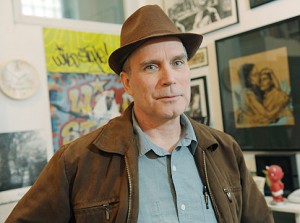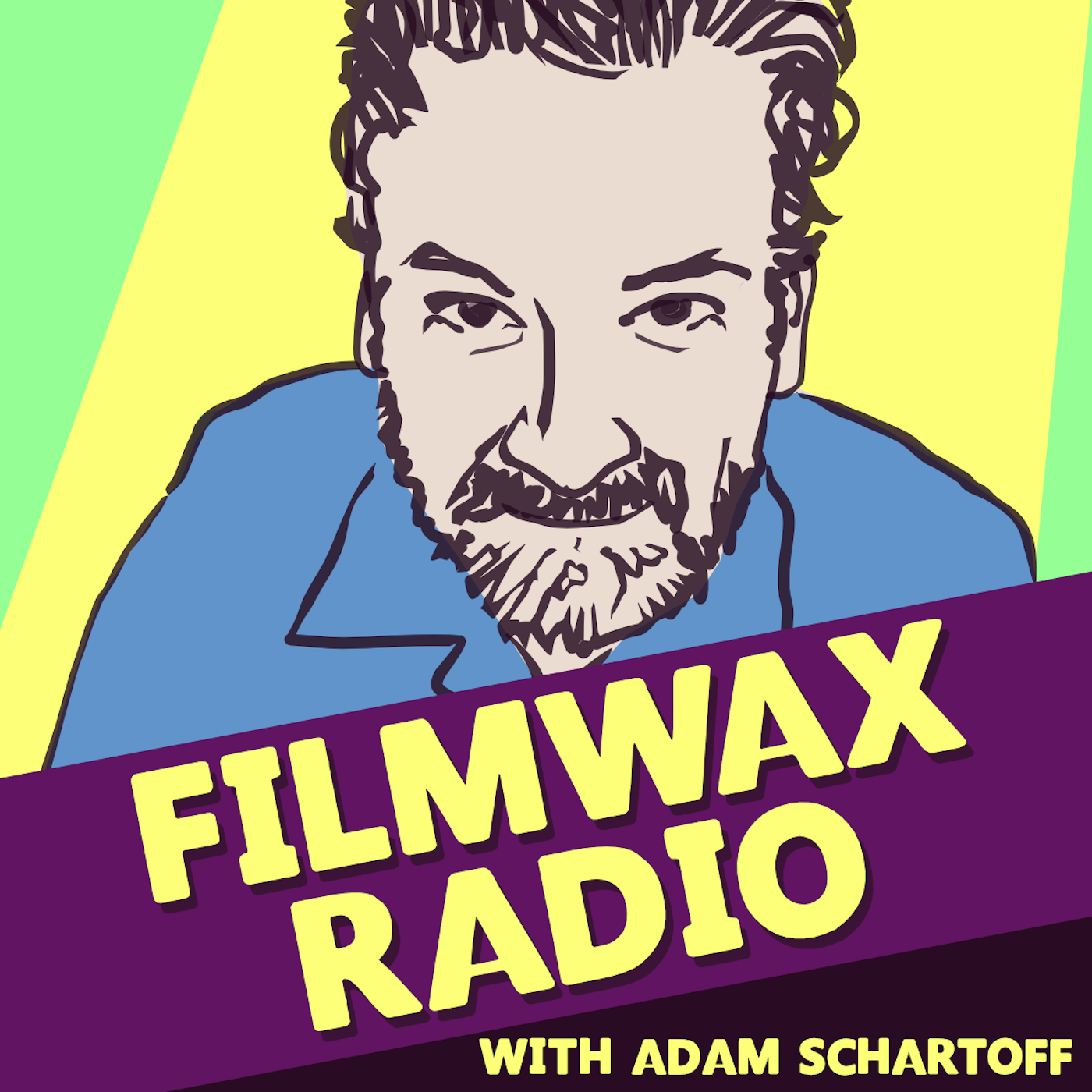
[Article originally appeared: http://www.pbs.org/pov/bamcinemafest_2011_charlie_ahearn_jamel_shabazz]
Charlie Ahearn has been taken up with New York City street art since he moved here in 1973. His 1982 film “Wild Style” featured graffiti artist Lee Quinones and a who’s who of hip-hop superstars. His latest, “Jamel Shabazz Street Photographer” falls neatly into place, following the titular photographer with whom he crossed paths back in the day. In my efforts to track Charlie down and interview the heck out of him, I went so far as talking myself into an art class he was leading in the subway system. He scoffed at that idea, but he was congenial and forthcoming in our long conversation.
Adam Schartoff: You grew up in Binghamton, New York. When did you arrive in New York City?
Charlie Ahearn: 1973. I came here to be a visual artist. I had a studio at the Whitney Museum independent study program that was sort of [an] elite finishing school for avant-garde artists. A lot of interesting people have gone through those doors. They set you up in a studio and you would meet, on a weekly basis, the creme de la creme of the avant-garde of that time. We would meet artists who were doing the most interesting things at that point, artists like Vito Acconci. It was a great way to come into New York.
AS: It must have been remarkable.
Ahearn: It was 1973, and what was going on at the time was a turning away from the traditional art world and the White Cube, and towards being out in the streets. There was this strong sense that if you were a happening artist of the time, the place to go was out, connect with people. It was a fresh view of what the whole process was about.
You had Gordon Matta-Clark deconstructing buildings up in the Bronx. He was taking photographs of graffiti. I was going into housing projects on the Lower East Side. I have 16mm film of kids break dancing in one of those housing projects from 1978. This morphed into my making a kung fu movie in one of those housing projects. During that time I saw the murals of Lee Quinones all over the housing project. He was an extremely allusive person. I was captivated by him as sort of the cutting edge of what I thought was the youth movement. He was the most respected graffiti writer among the kids in New York. Adults didn’t really know who he was. This led me to becoming involved in the Times Square Show in June of 1980. Fred (“Fab Five Freddy”) Brathwaite came with graffiti-related paintings. I ended up commissioning Fred and Lee to make a mural — which is like an illegal piece — out in front of the building. It was done in broad daylight in Times Square. Where they just wrote the words “Fab Five” in bubble style.
AS: So you were spending your time between the Bronx and the Lower East Side.
Ahearn: I wanted to pull away from that gravitational scene of the downtown punk scene and CBGB’s and the Mudd Club. The rapping, the dancing and the deejaying was coming from the Bronx. I felt that it would be a much more consistent, more codified statement to have the film about that. And, of course, the rest is history because that’s how people see it and understand it now. Otherwise, people would think it came out of the club scene. That would have been an easy mistake for people to make.
AS: Do you ever wonder what your trajectory would have been had you not gone through the Whitney Study Program?
Ahearn: I had a clear idea that I wanted to come to New York and be a visual artist. I had that in my mind pretty much from high school on. One fosters romantic notions about that when you’re far away from it. It was completely different once I was actually here. The whole approach to making your art turned out not to be on a canvas. It had to do with where you were working and who you were working with. It was no longer about bringing art to the masses. But the masses are bringing art to people. That was the idea. And, of course, interacting with people like Lee. There were many artists in the Bronx like Crash and Dave, people who were already there doing pieces on the walls and on the trains. And immediately getting involved with Don D and other great graffiti writers, as well as the whole gamut of the explosion of the rap culture.
AS: How far back were you aware of Jamel?
Ahearn: Well, it’s interesting. There was an issue of The Source Magazine, The 100 Greatest Moments of Hip-Hop. There was a page devoted to “Wild Style” in that issue, about it being the greatest movie ever made about hip hop. Jamel had an editorial of his photographs in that issue. That was in January of 1998. But when I clicked with his photographs was in 2002. I went and bought a copy of Back In The Days. I had the book in my hand and it was clear to me that this was something completely new. As a street photographer, he was breaking all the traditions, of the Robert Frank traditions of street photography, having to do with spontaneity, and having to do with capturing images…
AS: Documentary style.
Ahearn: Yes, he did everything that they would say was wrong. He would spend time with his subjects first. He would the pose his subjects, and in a very theatrical way. To which the earlier idea, it destroyed the life of what it was about. But I immediately perceived that this was an expression that was essentially hip hop. I had seen flyers of people posing like this from the late ’70s. In other words, the way he posed these people was not something that he made up. These were, in a sense, traditional cultural signifiers. They go back to the street culture of the ’70s.
It was just an immediate and powerful recognition that this was a new artistic statement. I thought it was very consistent throughout the book. And I also completely related it to what my brother (artist John Ahearn) was doing in his sculpture. He was not muckraking. He was not showing people as drug addicts. He was trying to show positive images of people, which is also not something in the avant-garde vocabulary. That always tends to kind of look into the destructive nature of people. But to picture people in a positive way, again, a complete statement of what I would say is a hip-hop statement.
AS: These things always seem to take a couple of decades before they’re discovered, don’t they?
Ahearn: Yeah, in a way. I have to say, when I made “Wild Style”, I was also completely surrounded by and aware of all kinds of destructive behavior. But that’s not in the film. I never felt like when I was making the film, that I needed to prove that I was street. I didn’t show violence or drug use to try and show how street I am in the film. So that kind of positive image of people, with the idea that those who know, know. You know what it is, it’s there, and that’s what that cool pose is about. You don’t show yourself to be a self-destructive jerk. The veneer they put out was powerful and positive.
“Jamel Shabazz: Street Photographer” closes the documentary program at BAMcinemaFEST 2011, Sunday, June 26 at 3:30 PM. Shabazz will also be signing books and showcasing his photography in the lobby at BAM Rose Cinemas. Subscribe to POV’s blog or like us on Facebook for more updates from BAMcinemaFEST 2011.

